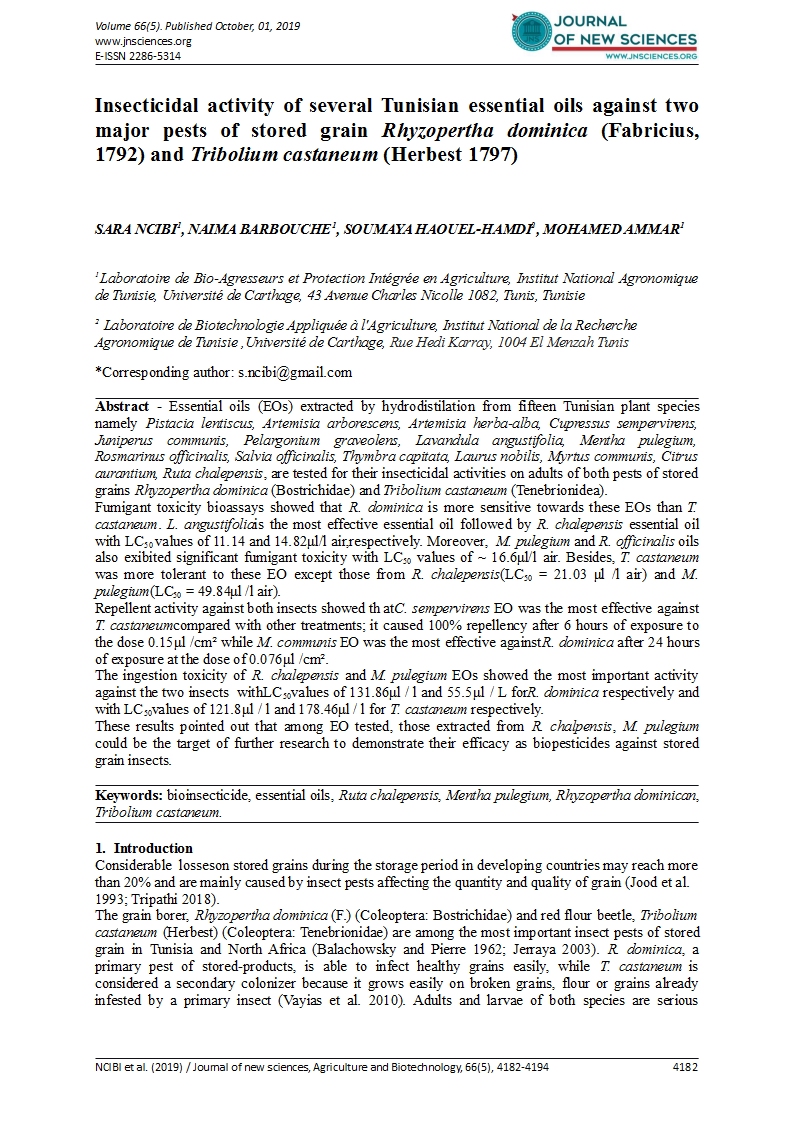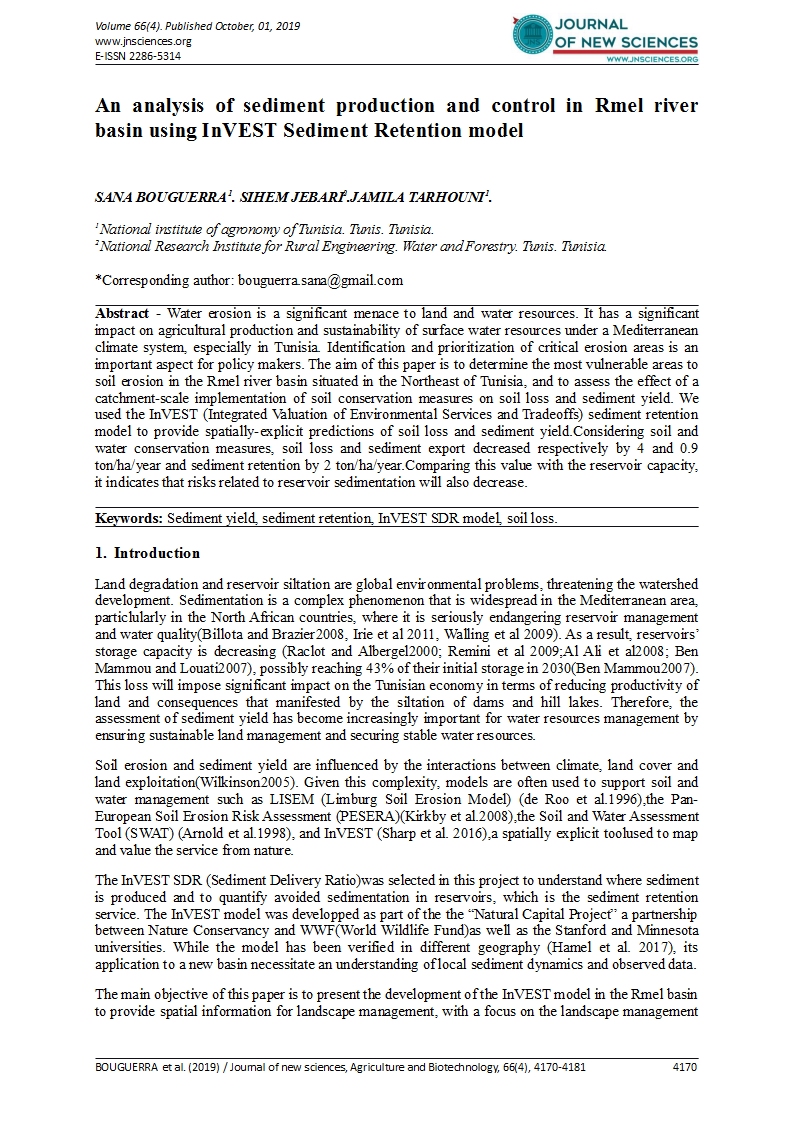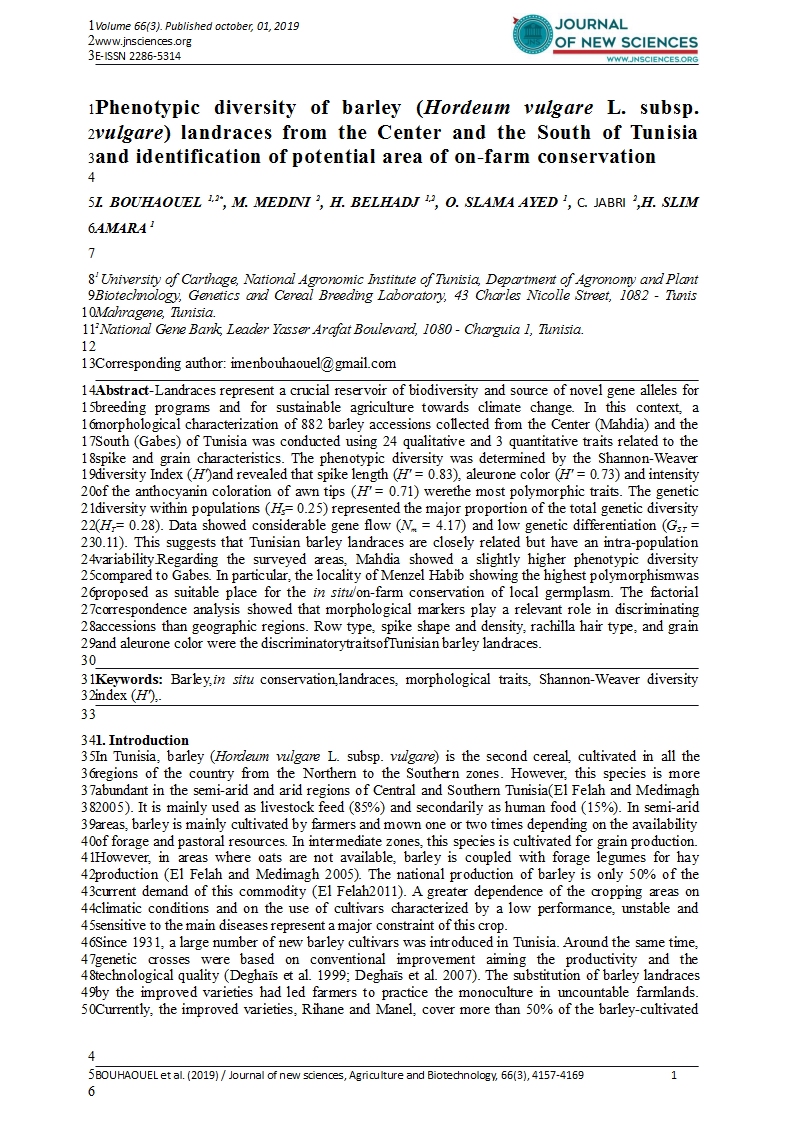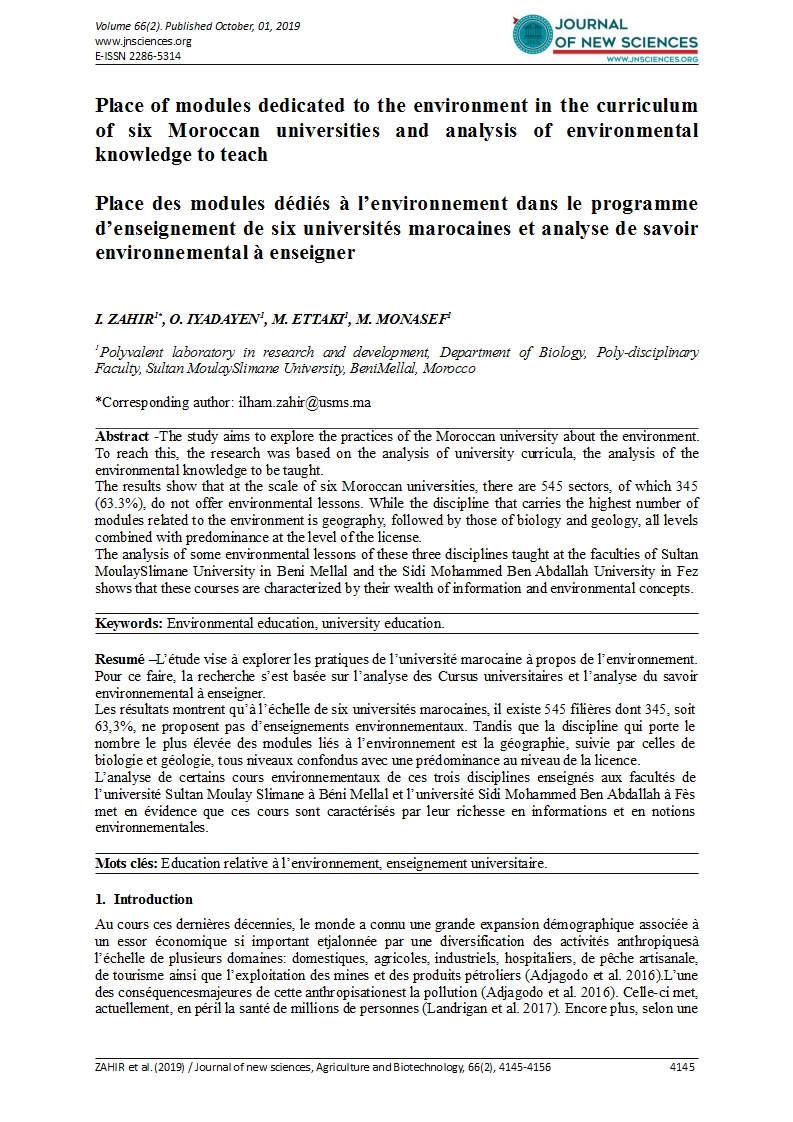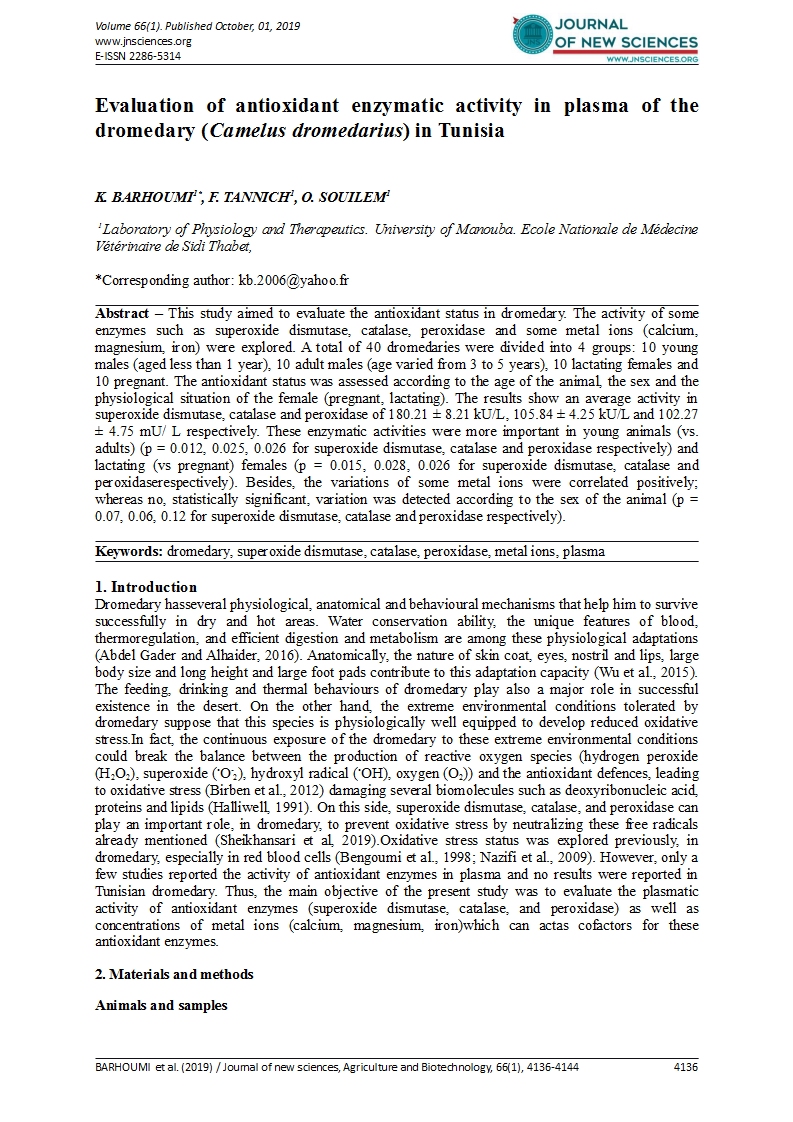- Category: Volume 66
- Hits: 4519
Effect of irrigation with olive-mill waste-water on physiological and biochemical parameters as well as heavy-metal accumulation in common bean (Phaseolus vulgaris L.)
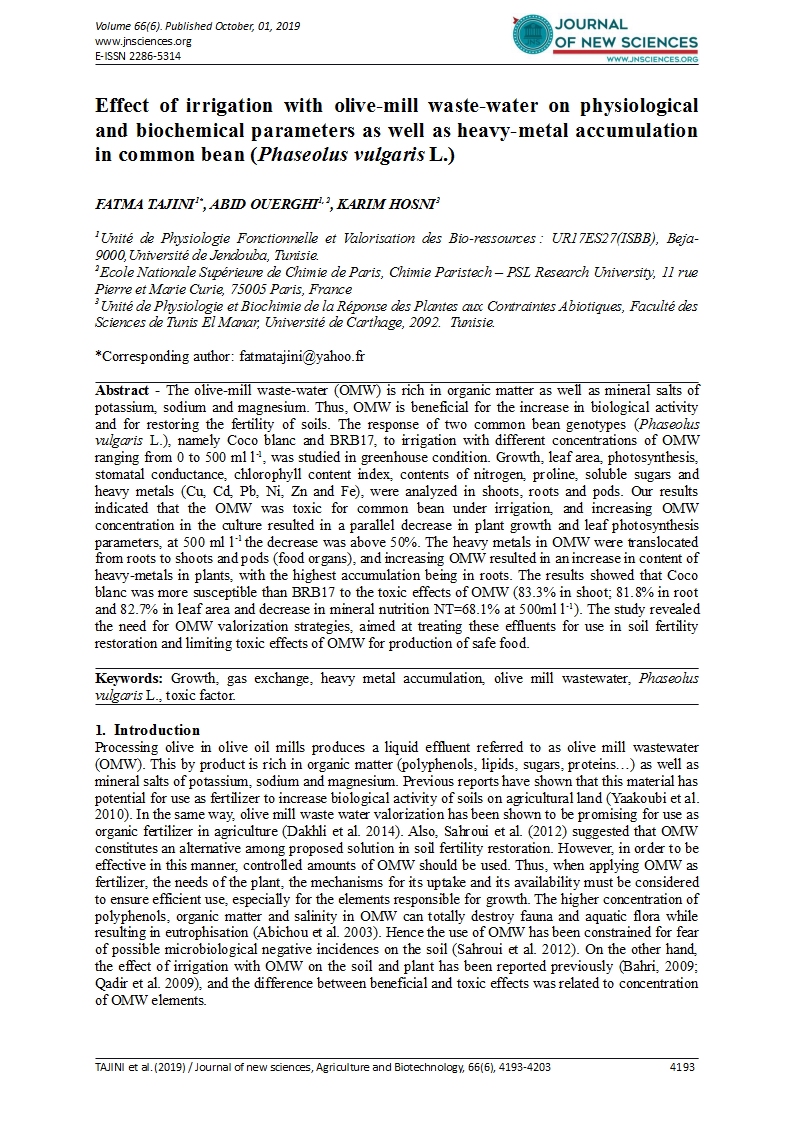
F. TAJINI1*
A. OUERGHI1, 2
K. HOSNI3
1Unité de Physiologie Fonctionnelle et Valorisation des Bio-ressources : UR17ES27(ISBB), Beja- 9000,Université de Jendouba, Tunisie.
2Ecole Nationale Supérieure de Chimie de Paris, Chimie Paristech – PSL Research University, 11 rue Pierre et Marie Curie, 75005 Paris, France
3Unité de Physiologie et Biochimie de la Réponse des Plantes aux Contraintes Abiotiques, Faculté des Sciences de Tunis El Manar, Université de Carthage, 2092. Tunisie.
Abstract - The olive-mill waste-water (OMW) is rich in organic matter as well as mineral salts of potassium, sodium and magnesium. Thus, OMW is beneficial for the increase in biological activity and for restoring the fertility of soils. The response of two common bean genotypes (Phaseolus vulgaris L.), namely Coco blanc and BRB17, to irrigation with different concentrations of OMW ranging from 0 to 500 ml l-1, was studied in greenhouse condition. Growth, leaf area, photosynthesis, stomatal conductance, chlorophyll content index, contents of nitrogen, proline, soluble sugars and heavy metals (Cu, Cd, Pb, Ni, Zn and Fe), were analyzed in shoots, roots and pods. Our results indicated that the OMW was toxic for common bean under irrigation, and increasing OMW concentration in the culture resulted in a parallel decrease in plant growth and leaf photosynthesis parameters, at 500 ml l-1 the decrease was above 50%. The heavy metals in OMW were translocated from roots to shoots and pods (food organs), and increasing OMW resulted in an increase in content of heavy-metals in plants, with the highest accumulation being in roots. The results showed that Coco blanc was more susceptible than BRB17 to the toxic effects of OMW (83.3% in shoot; 81.8% in root and 82.7% in leaf area and decrease in mineral nutrition NT=68.1% at 500ml l-1). The study revealed the need for OMW valorization strategies, aimed at treating these effluents for use in soil fertility restoration and limiting toxic effects of OMW for production of safe food.
Keywords: Growth, gas exchange, heavy metal accumulation, olive mill wastewater, Phaseolus vulgaris L., toxic factor.

